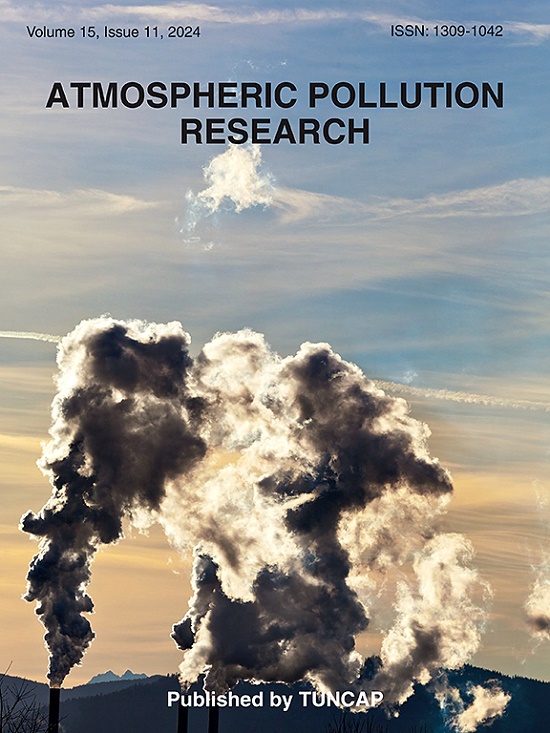Unveiling the dynamics of multi-scale carbon emissions in urban agglomerations: A hierarchical causal framework for China's strategic economic corridor
IF 3.5
3区 环境科学与生态学
Q2 ENVIRONMENTAL SCIENCES
引用次数: 0
Abstract
Understanding multi-scale spatiotemporal dynamics of urban carbon emissions is critical for crafting targeted decarbonization strategies. However, existing studies predominantly examine emissions at singular scales, overlooking cross-scale interactions and causal spatial dependencies. This study proposes a hierarchical analytical framework integrating urban agglomeration, county, and 500m grid levels to dissect carbon emission patterns across China's Yangtze River economic belt (YREB) from 2010 to 2020. Leveraging convergent advances in satellite-derived NPP-VIIRS-like nighttime light data and provincial energy inventories, we develop an ensemble approach combining geographical convergent cross mapping (GCCM) with multi-scale geographically weighted regression (MGWR) to unravel causal mechanisms and scale-dependent drivers. Our findings reveal three insights: (1) Emission trajectories exhibit strong path dependency, with the Yangtze River delta agglomeration contributing 60.4 % of total YREB emissions through 2020, while emerging hotspots demonstrate spatial decoupling from traditional economic cores; (2) Causal analysis identifies technology-intensity and tertiary sector growth as dominant mitigation factors, contrasting with persistent carbon lock-in effects from legacy infrastructure; (3) MGWR exposes paradoxical regional dynamics where urbanization drives emission reductions in advanced economies yet accelerates emissions in developing regions. The framework advances spatial econometrics by reconciling Simpson's paradox in cross-scale analysis while providing actionable intelligence for tiered carbon governance. This contribution establishes a replicable paradigm for transboundary emission management in mega-economic corridors globally.
揭示城市群多尺度碳排放动态:中国战略经济走廊的层次因果框架
了解城市碳排放的多尺度时空动态对于制定有针对性的脱碳战略至关重要。然而,现有的研究主要是在单一尺度上检查排放,忽略了跨尺度的相互作用和因果空间依赖性。本文提出了城市群、县域和500米网格层次的分层分析框架,分析了2010 - 2020年中国长江经济带碳排放格局。利用卫星衍生的npp - viirs类夜间灯光数据和省级能源清单的收敛性进展,我们开发了一种将地理收敛交叉映射(GCCM)与多尺度地理加权回归(MGWR)相结合的集成方法,以揭示因果机制和尺度相关驱动因素。结果表明:(1)排放轨迹表现出强烈的路径依赖性,到2020年,长三角城市群对长江经济带排放总量的贡献率为60.4%,新兴热点地区与传统经济核心呈现空间脱钩;(2)因果分析表明,技术强度和第三产业增长是主要的缓解因素,与传统基础设施的持续碳锁定效应形成对比;(3) MGWR揭示了城市化在发达经济体推动减排但在发展中地区加速减排的矛盾区域动态。该框架通过协调跨尺度分析中的辛普森悖论来推进空间计量经济学,同时为分层碳治理提供可操作的情报。这一贡献为全球大型经济走廊的跨界排放管理建立了一个可复制的范例。
本文章由计算机程序翻译,如有差异,请以英文原文为准。
求助全文
约1分钟内获得全文
求助全文
来源期刊

Atmospheric Pollution Research
ENVIRONMENTAL SCIENCES-
CiteScore
8.30
自引率
6.70%
发文量
256
审稿时长
36 days
期刊介绍:
Atmospheric Pollution Research (APR) is an international journal designed for the publication of articles on air pollution. Papers should present novel experimental results, theory and modeling of air pollution on local, regional, or global scales. Areas covered are research on inorganic, organic, and persistent organic air pollutants, air quality monitoring, air quality management, atmospheric dispersion and transport, air-surface (soil, water, and vegetation) exchange of pollutants, dry and wet deposition, indoor air quality, exposure assessment, health effects, satellite measurements, natural emissions, atmospheric chemistry, greenhouse gases, and effects on climate change.
 求助内容:
求助内容: 应助结果提醒方式:
应助结果提醒方式:


